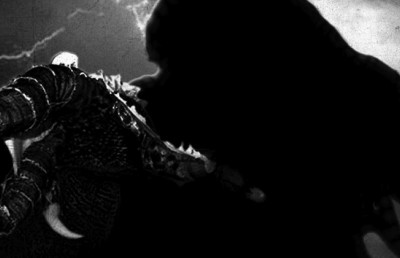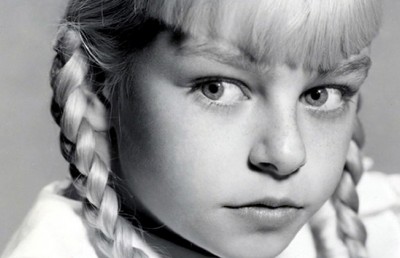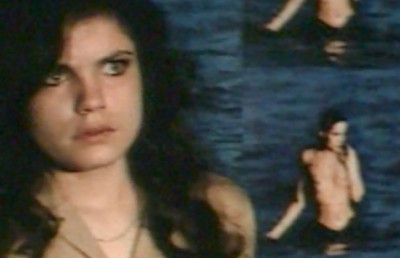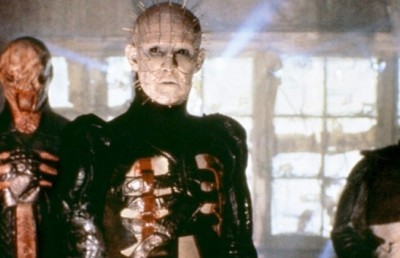Feminist Spaces in Horrific Places
Teaching Gender and Horror Cinema*
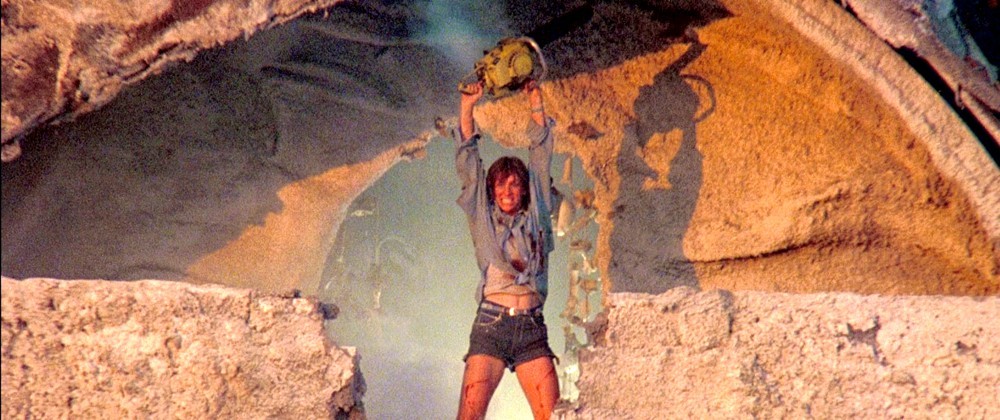
I teach a gender and horror course at Carleton University, originally in the Pauline Jewett Institute of Women’s and Gender Studies, and more recently in the Department of Film Studies. “The Monstrous Feminist: Gender and the Horrific” has drawn a broad range of students from different disciplines, many with no previous experience doing feminist critical analysis. Those who had studied feminisms had never applied them to such a subject; in fact, more than one student who signed up for the course remarked during introductions that they hadn’t expected to see any actual horror films, assuming that we would be discussing negative representations of feminists.
My objective for “The Monstrous Feminist” was not to “convert” feminists into horror fans, although that did sometimes happen, but to open up horizons for both horror and feminisms. Firstly, I wanted to offer horror as a site of critical reflection to students who might be unaccustomed to combining their feminism with film or literary theory and cultural studies. Secondly, I wanted to expand on well-known feminist theoretical analyses that seemed to lock feminisms into perpetual struggle with horror, raising intriguing questions of gendered spectatorship. In what follows, I will briefly review a few of these theories in discussing the experiences of the “Monstrous Feminists,” who repeatedly demonstrated that the feminist classroom can engender interpretive strategies beyond the scope of the “male gaze” first conceptualized by Laura Mulvey in “Visual Pleasure and Narrative Cinema” (1975). Mulvey’s influential essay tends to exclude the possibility of a gaze that is not only acutely aware of what horror does with and to women, but also of what feminists might do with and to horror.
Mulvey famously argues that cinema reflects men’s status as “bearer of the look” 1 and “builds the way” that “a woman is to be looked at into the spectacle itself . . . cinematic codes create a gaze, a world, and an object, thereby producing an illusion cut to the measure of desire.” 2 This formulation of the male look as active and the (female) object as passive led Linda Williams to claim in 1983 that, “when the woman looks” at horror, she invariably “is punished . . . by narrative processes that transform curiosity and desire into masochistic fantasy.” Women, therefore, are presumed not to look at horror because “they are given so little to identify with on the screen” and can only hide “behind the shoulders of . . . [their] dates.” 3 Such generalizations rule out many women’s experiences with horror films as Williams herself acknowledged in a 2001 reflection on her earlier work entitled “When Women Look: a Sequel,” writing that the “Mulveyan paradigm” did not account for “the pleasures, however problematic, women viewers may take in this genre” and that the “spectatorial-viewing experience” needed to be considered. 4 Women, therefore, can learn “how to look” at horror in subversive ways. This recognition had already surfaced in Williams’ “Film Bodies: Gender, Genre, Excess” (1991) where she speculates that a woman may find visual pleasure in the recognition of the monster’s “similar status within patriarchal structures of seeing” 5 and its presentation of “a horror version of her own body.” 6
Horror has often been regarded as a male-oriented genre and its fans stereotyped as violent, pornography-addicted teenage boys and immature men. However, such perceptions do not stand up to closer scrutiny, even in earlier days. Rhona J. Berenstein’s research on the marketing and reception of classic horror films exposes them as “sites of negotiation and contradiction when it comes to their portrayals of and assumptions about gender, both male and female.” 7 Brigid Cherry has studied female horror fans who “refuse to refuse to look,” similarly countering assumptions about female spectators with empirical research tied to processes and modes of the consumption of horror. Cherry’s work highlights a “marginalised and invisible” female horror spectator who prefers to rent and watch her horror movies at home. 8
In recent years, it is becoming increasingly obvious that women have been taking a more active and creative role in horror cinema as producers, directors, protagonists, narrators and fans. Cynthia Freeland points out that the “images of women” approach, focusing on the roles women play in horror films — “agents, patients, knowers, sufferers” 9 — asks only a “rather simple set of questions” pertaining to gender ideology. Women’s horror productions remain largely unexamined. Still, the struggle with horror’s images of women has been integral to feminist analyses of horror, even celebratory ones. One way to reconcile feminism with horror has been to excavate feminist politics within certain horror films, as Isabel Cristina Pinedo does in Recreational Terrors , finding redeeming values and sub-texts. Another approach is to consider horror spectatorship as gendered performance; Williams, for example, describes the “pleasurable and self-conscious performance” of gendered feminine responses 10 while Noel Carroll describes horror as a type of “endurance test” for adolescent males. 11 Cherry points out that her research subjects, whose tastes for particular types of horror film were decidedly gendered, seemed to also engage in “deliberate interpretive strategies to accommodate the films’ representations of women, either ignoring and making excuses for what they see as negative representations or condoning feminine behaviour in strong female characters.” 12
Matt Hills notes the significance of fans describing their childhood encounters with horror. For Hills, this “micro-narrative” denotes a move from Romantic excess, an absorption and fascination with horror, to cool knowledgeability, serving to distance the fan from “the culturally feminizing spectre of horror as fear provoking.” 13 Even if students reflecting on horror do not identify as fans, a step away from gender normativity and thus the fear of fear itself becomes possible when horror films are screened in the context of the feminist classroom, where we examine the varying degrees of appreciation with which feminist scholars analyze the gender ideologies of slasher and rape-revenge films. Carol Clover’s book Men, Women and Chainsaws has been particularly influential in the re-visioning of these sub-genres by making room in psychoanalytic criticism for cross-gender identification in the viewer’s gaze at the figure of the “Final Girl,” or slasher survivor. Clover argues that, in many cases, the slasher film concludes with a tomboyish kicking, screaming, fighting woman who triumphs over her pursuers, the occult film features men “opening up” to feminine forces of “Black Magic” as opposed to ‘White Science,” and the rape-revenge film explores the most graphic instances of “getting even.” In Clover’s version, however, the horror film viewer is still always gendered male, vicariously enjoying a temporary masochistic position as a slasher victim who is still always gendered female because of ‘her’ crying and cowering. Clover cautions:
[t]o applaud the Final Girl as a feminist development . . . is, in light of her figurative meaning, a particularly grotesque expression of wishful thinking. She is simply an agreed-upon fiction and the male viewer’s use of her as a vehicle for his own sadomasochistic fantasies an act of perhaps timeless dishonesty. 14
In class, we question why Clover would open up such wonderful territory for women in horror by insisting that subjectivity may be fluid, only to cede it yet again to the ubiquitous, sadomasochistic male gaze. Indeed, many class discussions of the Final Girl were not confined to “images-of-women” approaches that sought simply to identify which characters in the films could be Final Girls — students often talked about how particular characters did not behave like Final Girls. Still, Clover’s emphasis upon horror’s dynamic effects and how its consumption may construct varying positions of identification, not to mention her exuberant, detailed and insightful readings of given films, greatly expands the range of available interpretations.
It quickly becomes evident when studying different gender aspects of horror films that feminist criticism on horror is heavily influenced by psychoanalytic theories but lacks a certain respect for the specificities of the horror texts themselves. For example, one study of horror film reception by researchers Justin M. Nolan and Gery W. Ryan yields interesting results about what elements of horror appear to resonate most with male and female audience members. Their study compares the male response to “rural terror,” “a concept tied to fear of strangers and rural landscapes,” to their finding that “females display a greater fear of family terror, which includes themes of betrayed intimacy, stalkings and spiritual possession.” 15 Despite their intriguing results, Nolan and Ryan regarded the films as a simple collection of gendered “themes.” Thus, they quote Clover’s definition of the slasher film as one in which a psycho killer “slashes to death a string of mostly female victims, one by one until he is subdued or killed, usually by the one girl who has survived” 16 as if that is all one ever needs to know about slasher films. Clover’s synopsis is therefore presented as the essential meta-narrative of the slasher film; horror films become not only homogenized, but homo-generic; their individual features do not much matter. As Steffen Hantke aptly puts it, “it is not the horror text that silences the critic, it is the critic who silences the horror text.” 17 Thus, Williams theorizes around the classic Universal films and then extends her claims to all of horror. Similarly, Barbara Creed uses Julia Kristeva’s theory of abjection to discuss horror as a rejection of the semiotic order of motherhood for the symbolic law of the father without ranging beyond a scant handful of films picked to illustrate her categories of feminine monstrosity: archaic mother; monstrous womb; vampire; witch; possessed monster; deadly femme and castrating mother.
Against such sweeping accounts, Cynthia Freeland cautions that we should pay more attention to the “individuality of critical reaction from the audience.” 18 Sources of horror, Freeland argues, are not necessarily always synonymous with castration anxiety invoked by being the possessor of “the gaze,” just as they are not necessarily synonymous with the abject. She asks: “In what sense is a psychological theory of abjection ‘explanatory’ when it becomes so broad?” 19 It was with the intention of avoiding such overly broad focuses that I originally designed the course to encompass literary horror texts as well as film in order to show students that women could also be producers of horror. If women were significantly absent as horror directors and auteurs , they were quite well represented as horror authors. I also sought to incorporate international horror films that added creatures such as the Japanese vengeful ghost to the array of potent female monsters. The postmodern, pubescent lycanthropes of Ginger Snaps (2000), the virgin with the vagina dentate of Teeth (2007), and the titular predatory succubus of Jenifer (2005) are only a few of the more recent creations that enrich Creed’s categories of the monstrous-feminine. Maintaining its focus on films produced by women wherever possible, the course challenged students to rethink their conceptions of horror as located mainly in slasher films or dominated by more recent formulations of “torture porn.” Students therefore broadened their understanding of the horror genre as a space inimical to women or feminist interventions and grasped that it could be understood as far more than a set of well-worn clichés.
Film selections have varied but have included Black Christmas (1974), The Hills Have Eyes (1977), The Hunger (1983), The Texas Chainsaw Massacre (1974), The Texas Chainsaw Massacre 2 (1986), The Stepford Wives (1975), Teeth (2007), Rabid (1977), The Brood (1978), Let the Right One In (2008), Ginger Snaps (2000), Jenifer (2005), Sick Girl (2006), Fido (2006), Dawn of the Dead (1978), Day of the Dead (1985), Near Dark (1987), Audition (1999), Tokyo Gore Police (2008), In My Skin (2002), Braindead / Dead-Alive (1992), Martyrs (2008) and American Mary (2012). These films feature strong, non-normative or monstrous female characters. They raise feminist issues such as sexism, menstruation, pregnancy, motherhood, abortion, rape, gender trouble, and the gendered, raced or classed mapping of the body. They may contain Final Girls. They range from comical to disturbing, from slower to fast-paced, from conventional horror to “postmodern” and from less gore to more. Equipped with feminist theories, students become deeply absorbed in these films while maintaining an enjoyable engagement.
Many critics characterize horror film as a “participatory” genre that demands interaction. Class and cultures are also implicated in such interactions. Following social historian Lawrence Levine, both Pinedo and Williams in “Learning to Scream” distinguish between the “boisterous audience . . . a racially and economically mixed group” which “unabashedly let out loud screams, laughter, gasps, sarcastic remarks and exclamations,” and the more affluent and white . . . audience [that] quietly murmured to their viewing companions and barely let out a scream.” 20 Freeland also notes the horror fan’s particular engagement: “we may clap, laugh uproariously, or otherwise respond in surprising ways to things that we recognize as allusions, in-jokes, or sight gags, while our more weak-stomached friends . . . find the movie frightening or simply disgusting.” 21 Tania Modleski has questioned horror’s location on the Frankfurt School’s divide between lowbrow “pleasure” and highbrow jouissance. 22 Horror film audiences may in fact illustrate an uncoupling of the binary between jouissance (high culture) and pleasure (low culture); jouissance may additionally be derived from the cultural competence developed as an audience gains intertextual, scholarly or fan knowledge of horror.
These dynamics of horror film screenings were borne very much in mind during “The Monstrous Feminist,” where students were encouraged to remain aware of and empowered to express all their reactions, no matter how strong, as a starting-point for analysis. The politics of feminist horror film viewing were also foregrounded; one film presentation group for Teeth , which features rape scenes, chose to include “trigger warnings” and bring in a representative from a sexual assault centre as a resource for the class. Students were also made aware that they had the option to temporarily leave the classroom if they found a particular film or sequence too difficult to watch. My notes on our screenings and ensuing discussions show that these experiences were very different from the “date” or individualized experiences described by Williams and interrogated by Berenstein or, for that matter, the intimate encounters of Cherry’s female horror fans. “The Monstrous Feminist” classroom was certainly far from docile during screenings. Students screamed, howled, jumped and laughed raucously at their and others’ reactions. Interestingly, the students in one class expressed mostly angry frustration with the character of one of Clover’s classic Final Girls, Sally in Texas Chainsaw Massacre , who continually screams and moans throughout her ordeal. The class loudly berated her with “Oh come on!” “Shut up!” This seems to confirm Clover’s sense that the Final Girl is a “fiction,” one with which this class certainly did not agree, or raises the alternative possibility that horror film is highly contingent on historical context and time, as students also expressed disappointment with the slower-paced and (relatively) less gory older films such as The Hills Have Eyes.
Analyses of the films that arose during class discussions following the screenings were similarly not restricted to slotting women and monsters into formulaic psychoanalytic gender roles. Indeed, the students demonstrated remarkable sophistication in pointing out, for example, the raced and classed implications of gated communities and their relationship to public versus private space in films such as Fido and The Stepford Wives . Sometimes they chose to write research papers comparing remakes of horror films with the “originals” that explored not only gender differences in the portrayals of the characters but the meanings and effects of the bloodier representations of violence in the newer films. The idea that remakes might reflect backlash against feminism often surfaced in these papers. Students also discussed the implications of the hypersexualization of women with guns in newer horror films.
Our discussions of intersectionality considered Franklin as a disabled and gendered-feminine character in The Texas Chainsaw Massacre , issues of racism, colonialism and consumption in zombie films and cross-cultural comparisons with Audition and the other international films screened. Students asked: could rape revenge films, such as Teeth and I Spit On Your Grave (1978, 2010) be considered Third-Wave feminism or just “Hollywood’s take on feminism”? The protagonist’s predicament of having a vagina dentata in Teeth spurred discussions of the Rape-Axe, a South African anti-rape device that functions as an insertable dentata and the practice of “purity balls” in the United States. Clover’s description of the “phallic weapons” wielded by the slasher killer invited us to consider what non-phallic weapons might look like — cling wrap, water, garrotes, etc. We talked about some of the obscenities that the possessed Regan (Linda Blair) utters in The Exorcist as an example of how the aggressive violation of feminine rules of decorum can be monstrous and terrifying. This led us into a discussion of what types of fear might be empowering or disempowering and whether women’s desire for horror can be dangerous, to cite just a few examples of our discussions.
Feminist pedagogy, inspired by the anti-oppression education work of Paulo Freire, does not regard students as passive recipients of expert knowledge. Freire describes the idea that pedagogy is “an act of depositing” knowledge into passive students as the “banking model” of education and remarks that “the capability of banking education to minimize or annul the students’ creative power and to stimulate their credulity serves the interests of the oppressors, who care neither to have the world revealed nor to see it transformed.” 23 Classes with a feminist focus therefore routinely train students in active participation in the classroom just as horror audiences are active participants in horror films . Combining the two, I found that making “Monstrous Feminist” students facilitators of the films and rewarding creativity in their presentations produced astonishing results. Students were asked to work in groups to facilitate the horror film screenings and discussions, and these groups were graded on how much participatory engagement of their classmates they could inspire, requiring students to take full responsibility for incorporating the course material and encouraging them to be inventive in devising ways to keep the discussions lively, in keeping with horror’s tradition of gimmickry, showmanship and the tongue-in-cheek self-awareness that Philip Brophy has termed “horrality.” For example, one group as part of their presentation handout for Day of the Dead , circulated warning pamphlets about the “life-impaired” and a survey asking the rest of the class to rank their priorities for action in the event of a zombie apocalypse, while another group presenting Ginger Snaps came up with a trivia contest about the film where those who provided correct answers were rewarded with a wrapped tampon (in a nod to the film’s satirical association of menstruation with lycanthropy). Two Ginger Snaps groups presented slideshows of photographed tableaux where, like the characters Ginger and Brigette in the film, each group member staged deaths — one with her head in the oven like Sylvia Plath, another floating face down in a swimming pool. Still another group working on Audition gave the class an “Audition Casting Call” quiz, which analyzed the female characters in the film and invited those taking the quiz to step into one of their roles. Another group doing Audition had their first presenter pop out of a burlap bag, like one of the film’s victims, while a group presenting Martyrs performed a torture skit prior to the film’s beginning. Other groups handed out “props” such as little mirrors and bottles of garlicky water marked with crosses during the vampire film Let The Right One In or “chastity rings” during Teeth to accompany the background research the group did on the importance of virginity to patriarchal organizations in the United States.
In addition to the handouts and other materials they produced, many film groups expressed their creativity in the form of preparing snack food for the class, consulting Halloween recipes to come up with “gross-out” fare: eyeball cupcakes, “lady fingers” complete with almond nails, body-part cookies and corpse cakes, gummy worms, bloody punch, complete with a disgustingly realistic-looking hand fashioned from a rubber glove floating in the punchbowl, “blood-corn” and beef jerky. Students tasked with presenting Martyrs , which I had warned the class was a difficult film to watch, brought in pillows, blankets and stuffed animals as aids to comfort — as another student remarked, the room resembled a giant slumber party. Such caring, creative and participatory work, which I refused to allow to be trivialized as “feminine” or “flair,” showed me that students need not merely be passive, acted-upon recipients of a film’s messages. Indeed, I frequently witnessed students making “gender trouble” in their struggle to actively define, frame and interpret the horror films they were tasked with presenting. Students often put on carnivalesque drag, themselves actively subverting and transforming gender normativity. One group presenting Day of the Dead included a zombie George Romero and a zombie mermaid-princess among its presenters. This group also dressed up the classroom, transforming the room into a fortified bunker — named after the course code “Bunker 3005B” – as in the film and galvanizing the class with an introductory skit where the “Monstrous Feminist Survival Brigade” harangued the group à la Captain Rhodes about zombie survival. Many performances exploited the subversive possibilities of horror. Thus, one of the pamphlets handed out by a Ginger Snaps group mimicked the earnest tone of health and sexuality pamphlets designed for adolescent girls, slyly asking: “That funny feeling inside… understanding the transition from girl to werewolf — is it normal?” Another group created a similar pamphlet on “Signs of STW — Sexually Transmitted Werewolf,” which apparently includes the “desire to strut in slow motion,” parodying Ginger’s self-conscious sexy walk through the halls of her suburban high school, itself a parody of the expectations on young women to act like fashion models on a catwalk.
In short, “Monstrous Feminist” students, with little to no prompting from me, gave consistently outstanding horror performances that incorporated an incredible awareness of the interactions of gendered fear with social constructions of the body, amply rewarding my attempts to create “The Monstrous Feminist” classroom as a feminist space. One of the cleverest handouts our class received was a hand-drawn “Choose Your Own Adventure” from a Texas Chainsaw Massacre 2 group, showing the Final Girl weaving her way through a cartoon maze of formulaic choices and possibilities to “do the chainsaw dance” at the end, cheekily demonstrating how much of a cliché the slasher film has come to be for students. For me, this particular handout epitomized the particular pleasure of teaching gender and horror by offering a range of interpretations and possibilities available to feminists. Surely having the choice is what matters.
*An earlier version of this paper appeared as “When the Women Think: Teaching Horror in Women’s and Gender Studies” in Fear and Learning: Essays on the Pedagogy of Horror, eds. Aalya Ahmad and Sean Moreland (McFarland, 2013).
Notes
- Laura Mulvey, “Visual Pleasure and Narrative Cinema” in Film Theory and Criticism: Introductory Readings , eds. Leo Braudy and Marshall Cohen. New York: Oxford UP, 1999: 833-44, 837. ↩
- Mulvey, 843. ↩
- Linda Williams, “When the Woman Looks” in The Horror Film Reader , ed. Mark Jancovich (London: Routledge, 2001), 61. ↩
- Williams, “When Women Look: a sequel” in Freud’s Worst Nightmares , accessed online at http://www.sensesofcinema.com/2001/15/horror_women/. See also Williams, “Learning to Scream” in The Horror Film Reader , 168. ↩
- Williams, “Film Bodies: Gender, Genre, Excess” in Film Quarterly , 44:4, Summer 1991, 2-13), 4. ↩
- Williams, “Film Bodies”, 5. ↩
- Rhona J. Berenstein, “It Will Thrill You, It May Shock You, It Might Even Horrify You”: Gender, Reception, and Classic Horror Cinema” in The Dread of Difference , ed. Barry Keith Grant (Austin: University of Texas Press, 1996), 121. ↩
- Brigid Cherry, “Refusing to Refuse to Look,” The Horror Film Reader , 169-170. ↩
- Cynthia Freeland, The Naked and the Undead: Evil and the Appeal of Horror (Boulder: Westview Press, 2002), 13. ↩
- Williams, “Learning to Scream,” 167. ↩
- Noël Carroll, The Philosophy of Horror or, Paradoxes of the Heart (New York: Routledge, 1990), 193. ↩
- Cherry, 175. ↩
- Matt Hills, The Pleasures of Horror (London: Continuum, 2005), 77-78. ↩
- Carol Clover Men, Women and Chainsaws: Gender in the Modern Horror Film (Princeton, NJ: Princeton UP, 1992), 53. ↩
- Justin M. Nolan and Gery W. Ryan, “Fear and Loathing at the Cineplex,” in Sex Roles, (Volume 42, Numbers 1-2, 39-56), 39. ↩
- Nolan and Ryan, 40. ↩
- Hantke, Steffen. “Shudder as We Think: Reflections on Horror and / or Criticism.” Paradoxa No. 17, December 2002, http://paradoxa.com/excerpts/17intro.htm. ↩
- Freeland, 20. ↩
- Freeland, 14-15. ↩
- Isabel Cristina Pinedo, Recreational Terror: Women and the Pleasures of Horror Film Viewing (Albany, NY: SUNY Press, 1997), 17. ↩
- Freeland, 7 ↩
- Modleski, Tania. “The Terror of Pleasure: the contemporary horror film and postmodern theory” in Studies in Entertainment: critical approaches to mass culture . (Indiana University Press), 1986. ↩
- Paulo Freire, The Pedagogy of the Oppressed (New York: Continuum, 2000), 72-73. ↩



